SMTPs are the core elements of our pipeline of new drug candidates at TMS and represent a group of more than 60 compounds with similar structures, called congeners. Depending on the properties of individual SMTP congeners, appropriate target diseases or indications are being selected.
A family of new triprenyl phenols produced by a black mold Stachybotrys microspora (Note 1) is collectively referred to as SMTPs from the initials (Stachybotrys microspora triprenyl phenols). Their fundamental chemical structure resembles vitamin E.
[Note 1] There are a wide variety of molds and many are useful for humans. Typical examples include a green mold that produces an antibiotic penicillin, a koji mold that is indispensable for fermented food production, and a red-koji mold that produces a cholesterol-lowering agent.
We have discovered more than 60 different SMTP congeners to date. Their pharmaceutical properties greatly vary depending on differences in partial structures. We have developed a method to selectively produce these various SMTP congeners (Figure 1).
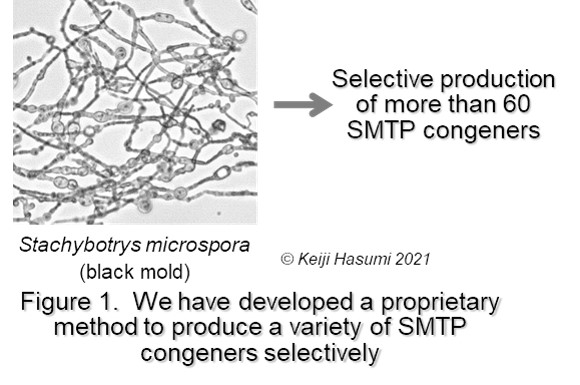
Some SMTPs have a set of three actions, (1) prothrombolytic, (2) anti-inflammatory, and (3) antioxidative activities, which jointly provide superior benefit in improving ischemic stroke (Type-A SMTPs). Other SMTPs only show anti-inflammatory and antioxidative activities but not prothrombolytic action. These are effective in improving inflammatory conditions (Type-B SMTPs) (Figure 2).
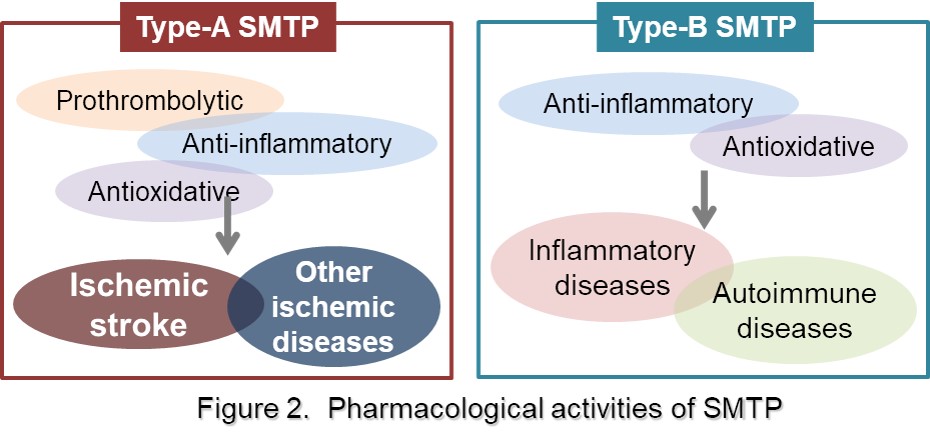
SMTP produces prothrombolytic action by inducing a conformational change in plasminogen molecule (Note 2). Circulating plasminogen is kept in a tightly packed conformation and therefore not easily activated into plasmin (Note 2). SMTP relaxes the conformation of plasminogen and facilitates its binding to fibrin, the main component of blood clot or thrombus (Figure 3). This consequently stimulates physiological thrombolysis (Figure 4).
[Note 2] Plasminogen is a protein circulating in the blood and serves as the precursor of plasmin, a thrombolytic enzyme. Plasminogen, when cleaved at one site by a plasminogen activator such as t-PA, becomes plasmin; this process is called the activation of plasminogen. In physiological thrombolysis, this activation predominantly occurs on/within thrombus.
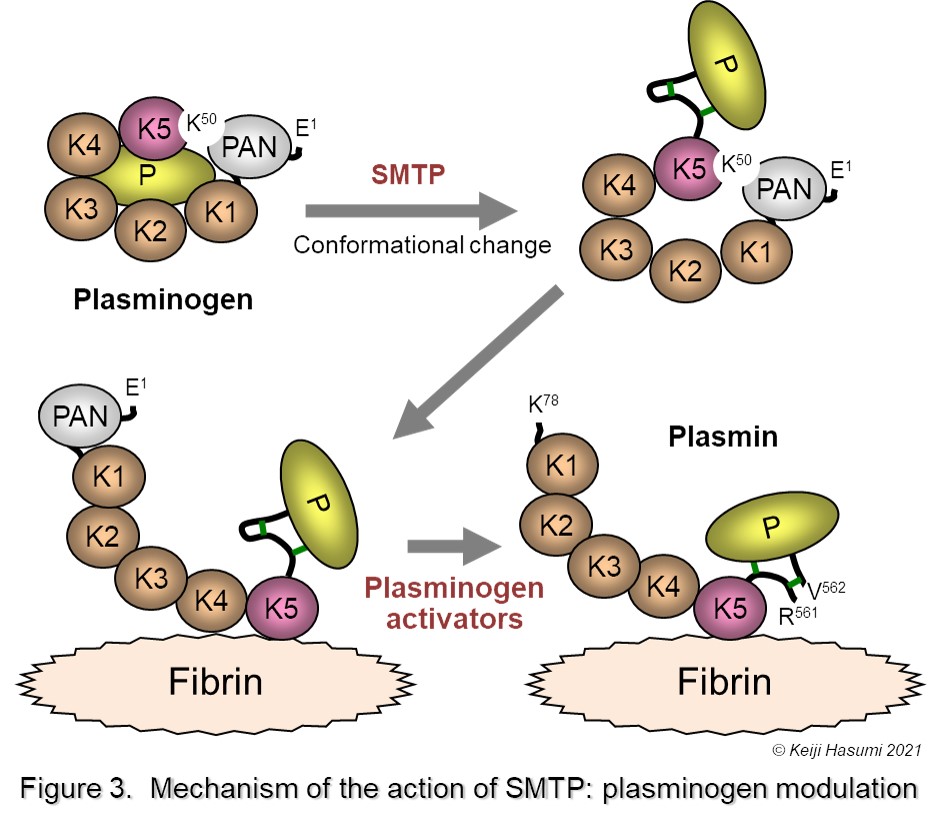
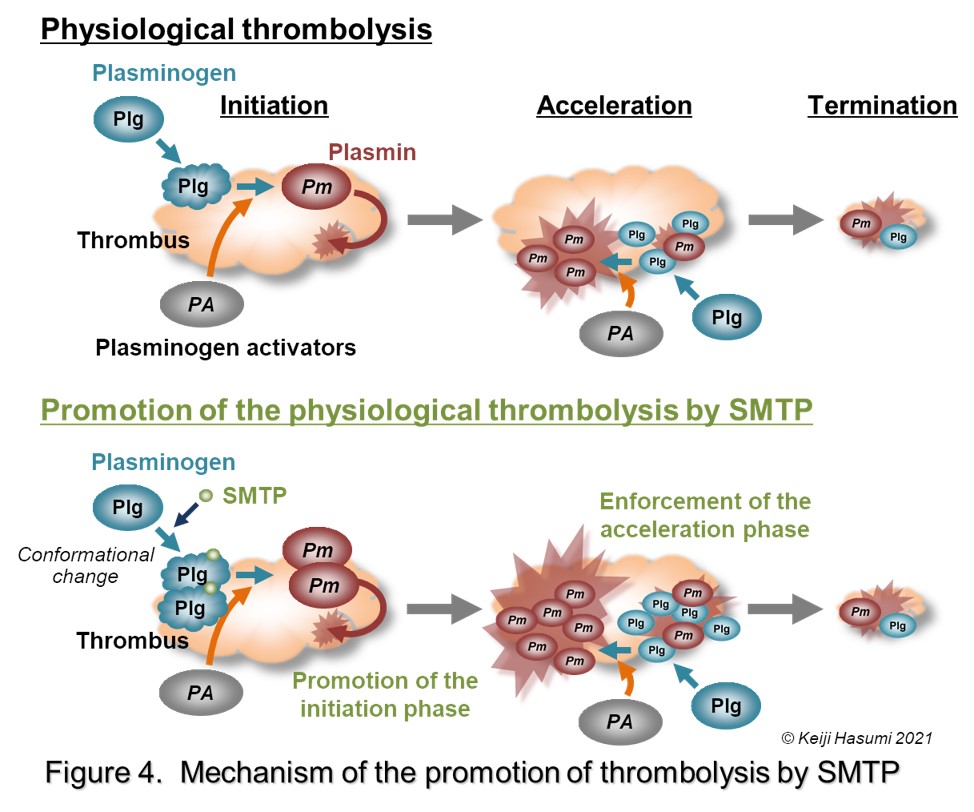
SMTP exerts anti-inflammatory action through inhibition of an enzyme called soluble epoxide hydrolase (sEH), which is important in regulating inflammation (Figure 5). SMTP could simultaneously inhibit two distinct catalytic activities of sEH, phosphatase activity at the N-terminal domain and epoxide hydrolase activity at the C-terminal domain. A mice model that lacks functional sEH exhibits anti-inflammatory phenotypes, which are similar to the pharmacological activity of SMTP (Figure 2).
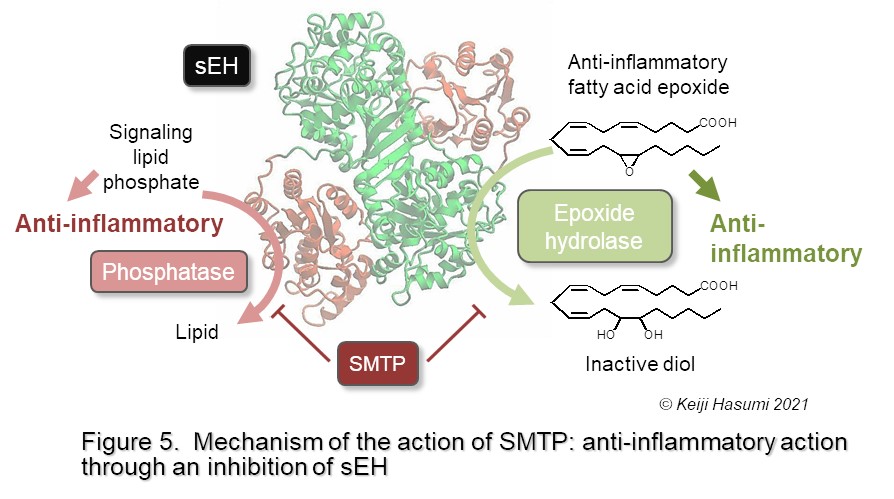
Vitamin E is known for its antioxidant effect. SMTPs, having a similar structure to vitamin E, exhibit similar antioxidant activity. This antioxidative activity also contributes to the excellent pharmacological action of SMTPs.
TMS-007 is a Type-A SMTP congener that possesses prothrombolytic, anti-inflammatory, and antioxidative activities. With these activities, TMS-007 is remarkably effective in treating ischemic stroke (Figure 6). Its efficacy and safety have been demonstrated in a phase 2a clinical study.
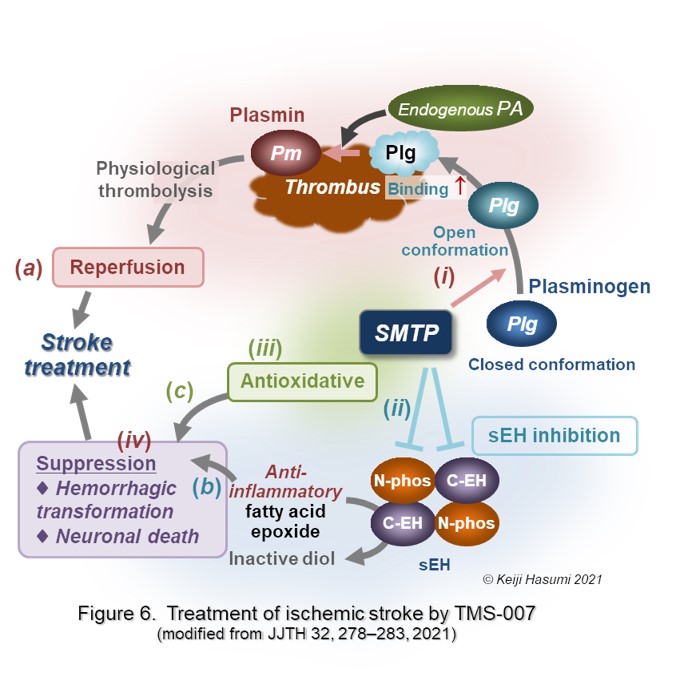
TMS-008 is a Type-B SMTP congener that has anti-inflammatory and antioxidative activities without prothrombolytic action. With this activity profile, TMS-008 is a potential candidate for the pharmaceutical development in the treatment of inflammatory diseases (Figure 7).
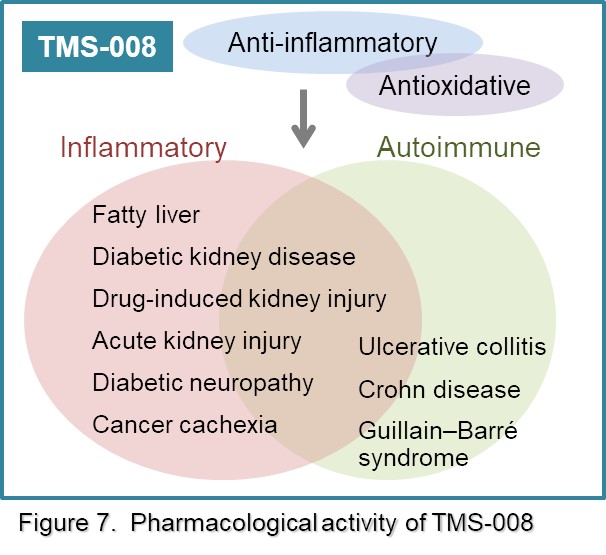
1) Hasumi K, Suzuki E (2021) Impact of SMTP targeting plasminogen and soluble epoxide hydrolase on thrombolysis, inflammation, and ischemic stroke. Int J Mol Sci 22, 954.
https://doi.org/10.3390/ijms22020954.
2) Hasumi K (2021) Development of small-molecule SMTPs with both thrombolytic and anti-inflammatory activities for the treatment of ischemic stroke. Jpn J Thromb Hemost 32, 278–283.
https://doi.org/10.2491/jjsth.32.278
3) Hasumi K, Yamamichi S, Harada T (2010) Small-molecule modulators of the zymogen activation in the fibrinolytic and coagulation systems. FEBS J 277, 3675–3687.
https://doi.org/10.1111/j.1742-4658.2010.07783.x
4) Hasumi K (2018) Compounds that stimulate thrombolysis — Aiming at development of new therapy for ischemic stroke. Kagaku To Seibutsu 56, 190–196.